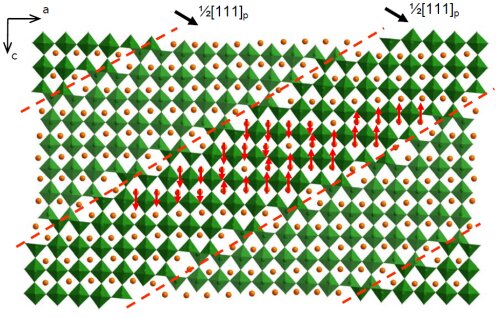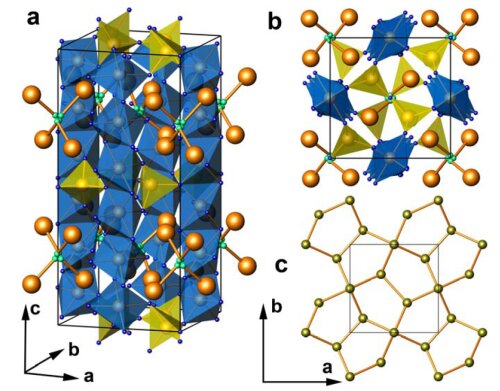New inorganic structures and modulated materials
EMAT has established collaboration with many other groups worldwide performing advanced TEM and crystallography work on new inorganic structures.
Novel perovskites
Perovskite-type compounds demonstrate enormouschemical flexibilityandversatility of functional properties. We were pioneering in further expanding the perovskite family exploring hitherto unknown distortion modes and building principles. Among the mixed perovskites and elpasolites A2BB'X6 (X = O, F) we established the existence of very complex structures with broken corner-sharing connectivity of octahedral perovskite framework due to flexibility of coordination environment of the B cations. From rigorous structure analysis based on a combination of transmission electron microscopy, synchrotron X-ray and neutron powder diffraction we derived the crystal chemistry conditions favouring formation of such structures.
We demonstrated the existence of a whole family of perovskites, where the anion deficiency is accommodated through crystallographic shear (CS) planes, which were generally assumed to be incompatible with the perovskite structure. We have discovered the (Pb,Bi)1-xFe1+xO3-y perovskites modulated by CS planes and unravelled their structures using crystallography in (3+1)-dimensional space [1]. By manipulating the CS planes we discovered the novel perovskite-based homologous series AnBnO3n-2 (A = Pb,Bi,Ba,Sr, B = Fe, Ti, Mn, Sn, Sc) [2].

Modular structures
We explore the ability of the lone pair cations (Pb2+, Bi3+) to generate modular structures by relieving the stress at the interfaces between the structure modules through their flexible coordination environment. BiMnFe2O6 is an example of a quasi-2D structure where the blocks of a hypothetical hexagonal close packed MO structure are stabilized by the Bi3+ cations. [3] This material demonstrates a frustrated (Mn,Fe)-O sublattice, giving rise to an acentric spiral magnetic ground state.
Recently we obtained the novel Bi4Fe5O13F compound by using Bi4F tetrahedra as separators between pentagonal Cairo Fe-O layers [4]. Bi5Fe4O13F features a non-collinear AFM ground state and an intricate sequence of magnetic phase transitions.

Incommensurately modulated materials
Competing interactions causing intricate modulated structures are very common in inorganic materials. We apply a combination of superspace crystallography, electron diffraction, transmission electron microscopy and powder diffraction techniques to investigate incommensurately modulated structures. So far we successfully resolved the modulated structures of A2BB'O5 brownmillerites, mixed electronic-ionic conductors A4B6O13-d (A = Sr,Ba, B = Fe,In,Mg), todorokite [SrF0.8(OH)0.2]2.526[Mn6O12], multiferroic perovskite Bi0.75La0.25FeO3, Li+ ionic conductors Li3xNd2/3-xTiO3 and others.